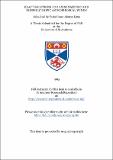Files in this item
Exact solutions for axisymmetric and nonpolytropic astrophysical winds
Item metadata
| dc.contributor.advisor | Priest, E. R. (Eric Ronald) | |
| dc.contributor.author | Lima, João José de Faria Graça Afonso | |
| dc.coverage.spatial | 95 p. | en_US |
| dc.date.accessioned | 2018-06-18T10:50:56Z | |
| dc.date.available | 2018-06-18T10:50:56Z | |
| dc.date.issued | 1995 | |
| dc.identifier.uri | https://hdl.handle.net/10023/14180 | |
| dc.description.abstract | Astrophysical outflows are common in a large variety of objects with very different length-scales. They can be almost spherical, as in the case of the solar wind, or show a high degree of anisotropy as in pre-main sequence stars, star-forming regions or even extragalactic objects. This work is aimed at finding exact solutions of the axisymmetric wind equations in which all variables depend not only on the distance to the central object but on latitude as well. The geometry of the stream/field-lines is taken as helicoidal and this seems to be a good approximation in some examples of collimated flows. From a simple hydrodynamic approach, a straightforward technique based on separation of the variables yields the most general solution of the wind equations under the above assumptions. The way the different variables depend on latitude is controlled by three anisotropy parameters which are related to typical ratios at the base of the atmosphere. The density needs to be higher at the equator than at the pole for the outflow to be able to accelerate. In these circumstances, the radial velocity always increases from equator to pole. Contrary to Parker's model of the solar wind, the solution does not pass through any critical point, since no polytropic law is assumed. However, the general behaviour is similar, with a high acceleration at the base and the velocity rapidly attaining an almost constant asymptotic value. The heating rate that sustains this rapid increase is mostly concentrated near the surface of the central object. The inclusion of the magnetic field in the analysis introduces two critical points: the Alfvenic point and an extra X -type point filtering the solution that gives a vanishing pressure at infinity. If the density anisotropy is too low the wind is unable to accelerate to large asymptotic values. The dependence of the angular velocity of the roots of the fieldlines with latitude reproduces well the observed rotation profile of photospheric magnetic features. The mass loss rate can be substantially increased if the structure of the outflow is highly anisotropic. Some applications to the solar wind are also discussed. In particular, recent results from ULYSSES (pointing out that solar speed increases with latitude while the density decreases from equator to the pole) are in good agreement with the general behaviour of the solutions presented in this work. | en_US |
| dc.language.iso | en | en_US |
| dc.publisher | University of St Andrews | en |
| dc.subject.lcc | QA927.L5 | |
| dc.subject.lcsh | Wave-motion, Theory of | en |
| dc.title | Exact solutions for axisymmetric and nonpolytropic astrophysical winds | en_US |
| dc.type | Thesis | en_US |
| dc.type.qualificationlevel | Doctoral | en_US |
| dc.type.qualificationname | PhD Doctor of Philosophy | en_US |
| dc.publisher.institution | The University of St Andrews | en_US |
This item appears in the following Collection(s)
Items in the St Andrews Research Repository are protected by copyright, with all rights reserved, unless otherwise indicated.

